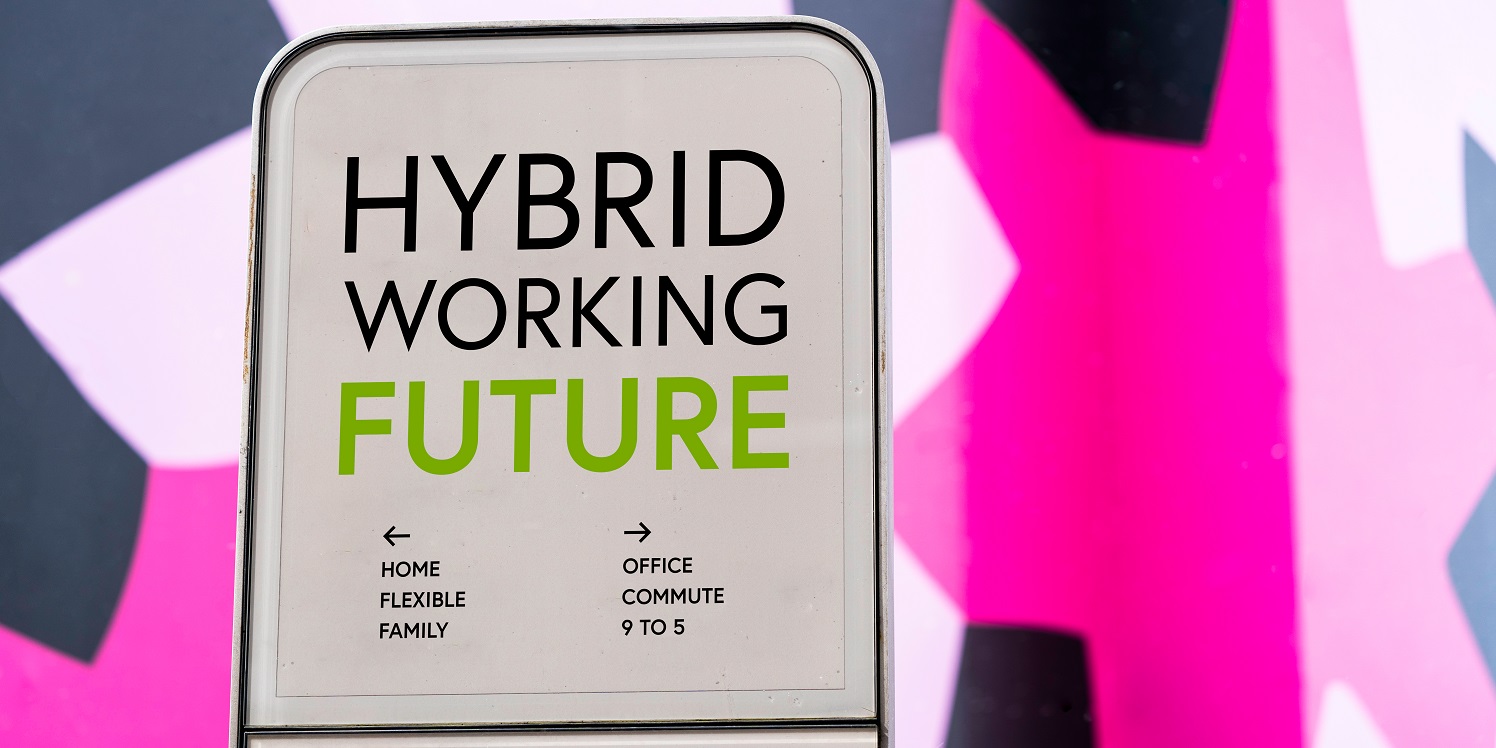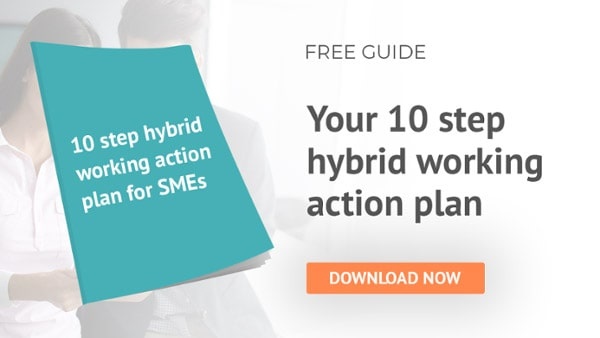How can you choose a hybrid working model for your business that enables employees and the organisation to truly thrive? HR consultant and flexible working expert Gemma Dale gives her tips on the models available and what may fit your organisation.
You can also download Gemma's 10 step hybrid working action plan to help create the perfect plan for your organisation:
Hybrid working takes place on a spectrum. At one end, there are employees who are almost always working remotely and only go into the office infrequently. At the other end is the opposite, with employees spending most of their time in the office and co-located with colleagues, working remotely on an occasional basis. In between, there are a myriad of different opportunities to blend remote and office-based work.
Which is the best hybrid working model...?
There is no single one way to implement hybrid work, and no single ‘best practice’ model. Just how hybrid work is actually going to work in practice remains to be seen. Much will be learned in the months to come, as organisations begin to implement this new approach at scale.
Some organisations are still working out just what their hybrid working model should be. Do they follow organisations like Apple, who have mandated that employees attend the office for three days a week, or go with something more flexible and autonomous?
The answer lies in the complicated balance between what is the right approach for employees, their teams, the organisation as a whole, and its customers, users, and stakeholders. Finding this balance will be tricky, and the specific wants and needs of these different groups may not always align. For complex organisations with many different roles and activities, there may well not be one hybrid working model for all employees, but a mixture of approaches tailored to activities and responsibilities.
Hybrid model options

There are a number of different possible hybrid working models:
- Mostly office based with some remote working (sometimes known as ‘remote first organisations’)
- Mostly remote with some office based working (sometimes known as ‘office first’)
- 50/50
- 3/2 or 2/3 (three days in the office and two at home or vice versa)
- Flexible hybrid – recognising that some roles will vary according to seasonal fluctuations, a model that varies over the year
Of course, it’s also possible not to formalise a model at all, but to adopt hybrid working as a principle and devolve the decisions of how this should operate to individual teams. This may naturally result in many different approaches within one organisation – which has both benefits and drawbacks.
Depending on the nature of the organisation, there may also be a mixture of employees who are entirely remote, or some that cannot work remotely at all. These aren’t the only differences; some employees may undertake hybrid work in isolation, while others may work hybrid while also having other forms of flexible working too.
Choosing your hybrid model(s)

Organisations will need to decide which hybrid working model – or indeed combination of models – is the right one for them and their particular context and culture. There are several important considerations when decision making:
- Blanket approaches, such as set amount of required office time, may be too restrictive and disengage or frustrate employees
- People are generally happier and more engaged when they have had the opportunity to take part in decision making or creating an approach
- Office first approaches, or high requirements for office attendance may result in talent retention issues – research suggests that the ability to work remotely is so important to employees that they will look for new opportunities if their current employer will not support remote flexibility
- Different people will have different needs – possibly even within the same team. Although hybrid work is highly desirable, some employees want to work in an office full time for all sorts of reasons, and their needs should be accommodated too
Generally, the greater the choice that organisations can provide, the better this will be for their people in terms of job satisfaction, employee engagement, personal productivity, and wellbeing.
Choosing a hybrid model: key questions for organisations
The best hybrid working model is one that fits the organisation and its culture, and can supports its aims and objectives. The following questions can aid reflection on hybrid working model suitability – and identify just what that best model is:
- How do employees want to work – and what are the risks of not supporting them to work this way?
- What kind of work do your employees do? How much of this is independent, focused work and how much of it is work that requires collaboration with others?
- What are the needs of your customers and stakeholders? Can they be served from anywhere – or any when?
- How often do people need to come together to work – and what for?
- What working patterns will best suit your operational and organisational requirements?
- What form of hybrid work will your systems and technology support?
- Taking into account the work that people do, how much autonomy can employees have to decide where they work when?
- What are the potential benefits and challenges to each of the different hybrid working models?
Whichever hybrid working model is adopted, organisations must be prepared to adapt their approach as we begin to understand hybrid working in practice. This is a time for experimentation, listening and learning, rather than setting models and policies in stone.
If you want to develop an effective hybrid working strategy for your business, you can download my 10 step hybrid working action plan to create a personalised plan that works for your organisation and your people.

Written by Gemma Dale
Gemma Dale is an experienced senior HR professional, CIPD Chartered Fellow, HEA Fellow, and a regular speaker and writer on a variety of HR topics. Gemma is the co-author of the book 'Flexible Working' published by Kogan Page in 2020. She is also a lecturer in the Business School at Liverpool John Moores University and runs her own business, The Work Consultancy.


 Holiday Planner
Holiday Planner Absence Management
Absence Management Performance Management
Performance Management Staff Management
Staff Management Document Management
Document Management Reporting
Reporting Health and Safety Management
Health and Safety Management Task Management
Task Management Security Centre
Security Centre Self Service
Self Service Mobile
Mobile




